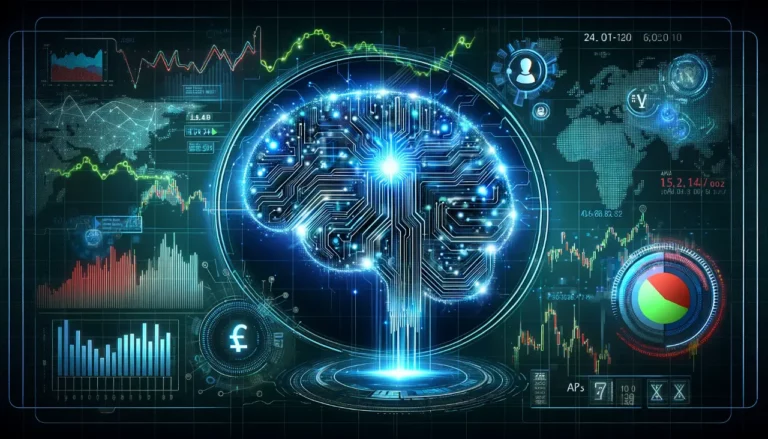Introduction
In the dynamic world of financial markets, traders and investors continuously seek cutting-edge tools to gain an edge. TradingView has emerged as a beacon in this landscape, offering robust analytical tools powered by AI trading signals. This comprehensive article delves into how TradingView leverages AI to provide trading signals, enhancing decision-making processes for traders of all levels.
What is TradingView?
TradingView is a cloud-based charting and social networking platform widely used by traders and investors for real-time data, market analysis, and trading signals. It stands out for its intuitive interface, community-driven insights, and integration with various trading platforms.
AI Trading Signals in TradingView
Core Functionality
AI trading signals in TradingView are generated through advanced algorithms that analyze market data. These algorithms consider a multitude of factors including price trends, historical data, volume, and market sentiment. By processing vast amounts of data, the AI can identify potential market movements, providing users with actionable insights.
Machine Learning and Pattern Recognition
At the heart of these AI signals is machine learning, which enables the system to learn from historical data and improve its predictions. TradingView’s AI algorithms excel in pattern recognition, identifying recurring patterns in market data that often precede significant price movements.
Customizable Indicators and Scripts
TradingView stands apart for its customizable technical indicators and scripts. Users can create their own indicators using Pine Script, TradingView’s own scripting language, allowing for personalized AI signal generation based on individual trading strategies.
Advantages of Using TradingView’s AI Trading Signals
- Enhanced Market Analysis: AI signals provide a more comprehensive market analysis, considering variables and patterns beyond human capacity.
- Real-Time Decision Making: With AI’s rapid data processing, traders receive real-time signals, crucial for time-sensitive trading decisions.
- Reduction of Emotional Bias: AI signals offer an objective viewpoint, helping traders avoid decisions based on emotions or biases.
- Backtesting Capability: Traders can backtest their strategies against historical data, refining their approach with AI’s insights.
- Community and Collaboration: Users benefit from a community of traders, sharing scripts, strategies, and insights, fostering a collaborative environment.
Risks and Considerations
While TradingView’s AI trading signals offer numerous benefits, there are risks and considerations:
- No Guarantee of Success: AI signals are predictions, not certainties. Market volatility and unforeseeable events can affect their accuracy.
- Need for Human Oversight: Traders should combine AI insights with their own analysis and judgment.
- Complexity for Beginners: Novice traders might find advanced AI features and scripting overwhelming.
Conclusion
TradingView’s integration of AI trading signals represents a significant advancement in financial market analysis. By harnessing AI’s power, traders can access deeper insights, automate aspects of their analysis, and make more informed decisions. However, it’s vital to approach AI trading with an understanding of its limitations and a strategy that blends technological insights with personal expertise. As AI continues to evolve, platforms like TradingView will undoubtedly become even more integral to traders globally.
This article provides a comprehensive overview of TradingView’s AI trading signals, offering insights into how they work, their benefits, and considerations for their use. Whether you’re a seasoned trader or just starting out, understanding the role of AI in trading can be a valuable component of your market strategy.













